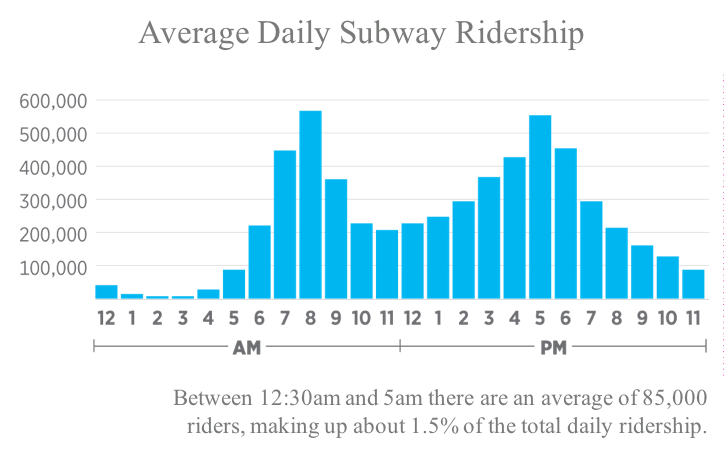RPA’s plans have a history of sparking, ahem, robust dialogue as we introduce new ideas into the mix. The point of these plans is to take a longer range view and to be unafraid of suggesting new ways of doing things, even if they go against the status quo.
The Fourth Plan which we released yesterday has 61 actions to make our region work for all. Each of these actions has a series of substeps. For example removing barriers to transit oriented development is a series of policy changes including updating local zoning codes; changing state level caps of residential development; and reforming federal finance mechanisms.
Yesterday, one of the sub recommendations in another section “adopt new technology for fast, reliable subway service” caused quite a stir. In this section, we call for speeding up the transition to a modern signal system in the subway.
You know the feeling when you see that “delays” are listed for 6 lines at a time because of a signal failure at a key junction? That’s because the subways are running on signal technology that’s older than a great-grandfather, and at the current pace of replacement, the MTA expects to be done about the time that you become one.
RPA suggests that this process could be expedited, and new signals could be deployed across the system in 10 to 15 years, in part by allowing more consistent and longer blocks of time for workers to access the rails. One way to do this is by replacing subway service with frequent buses that would mirror subway routes from 12:30-5 am on weeknights Sunday into Monday morning, Monday, Tuesday and Wednesday nights, when only 1.5% of subway riders use the system. Because streets are uncongested at these hours, buses could provide the same level of service as subways. Subways would still run 24 hours on Thursday, Friday and Saturday nights. RPA also called for replacing the subway during these hours with frequent buses that would mirror subway routes and provide the same level of service for passengers.
The fact is that overnight subway service today is infrequent and unreliable as the MTA tries to cram in projects on different parts of the system overnight.

Perhaps this would be a short term intervention until signal modernization is complete, or perhaps this practice, which is commonplace in other cities around the world, would be continued to allow time for the MTA to do other standard maintenance work, like removing debris from tracks (bye-bye track fires!), fixing leaks (see you later gross drips on your head when it rains), or just deep cleaning stations (no thanks stinky platforms covered in you-don’t-even-want-to-know).
This proposal would need to be studied in depth before it is implemented, particularly to confirm that late-night riders who need transit to get to work would still have a reasonable commute with high-speed bus service. Whether or not it is ultimately adopted it has sparked an important conversation. As NYC Department of Transportation Commissioner and MTA Board member Polly Trottenberg said yesterday on WNYC “All of us in transportation realize you need to find a balance and accept some short term inconvenience so you can speed up some of these urgently needed projects.”
